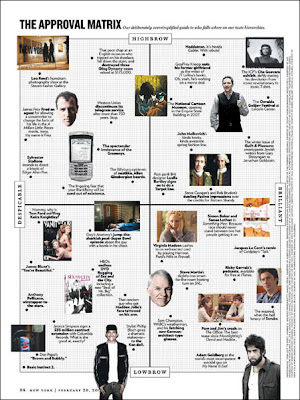My meeting with Anne
Pickles from Cumbria Newspapers was arranged for me to find out what impact the
Internet and technology has had on local print media.
The following points
are what I discovered:
- Websites generally need to use print as a promotion to get people to visit a website. A website cannot be discovered if the web address isn’t printed anywhere.
- Websites need a strategy for making money. If all stories were posted on the website, people could view them for free instead of buying the printed version for 50p. The strategy is usually through advertising because space can be sold to advertisers just like it is in print.
- Some people have only have the Internet as a way of access and vice-versa so print and digital work well alongside each other.
- Sometimes using the website to provide only a headline or the beginning of a story can leave readers short-changed and can give the newspaper as a whole a bad reputation. Therefore, it needs to be selective. Print will always be decided first before anything is put on the website. The website then doesn’t included every story just a selected amount.
- Social networking is used to promote the newspaper. It helps build contacts and relationships with the readers as well as interacting with them e.g. competitions. The Twitter feed and Facebook status can display breaking news like when roads or schools are closed. People need to know these things immediately and the Internet can provide that. Vital information can be distributed much more efficiently online.
- Iphone and Android apps are used selectively in the same way that the website is used. This provides accessibility for people wherever they are as well as promotion for the newspaper.
- These elements, whether it is print, website, social networking or apps, work to support each other.
- There is a fight to hold onto print so it is vital that credible media still exists. With bloggers, you are not always guaranteed the truth as they are hidden behind a computer screen. You don’t know who the writer is and are unsure of certainty in the information that is given.
- iPads haven’t really had any affect on the local media around Cumbria. Competitions are held in the newsprint to win an iPad as they have not been a threat mainly because of them being so expensive along with signal being unreliable just like with mobile phones.
- There is a nervousness of Permanence V Fleeting. People seem to think that newsrooms nowadays are paper-free offices because we all sit at computer screens. However, hard copies of everything are always printed in case of unexpected crashing or files can be lost easily. I’ve still got print work that I have kept for years so that I can keep going back to it. This is something that isn’t as easy with online media.
- The Internet has opened media up to a whole new size audience. The twitter page attracts people from different countires and all over the world who comment on articles they have read and enjoyed.
- The Daily Mail are still successful in print alongside a great website with fully written stories. They spend a lot of money on the website and printed version is still as popular as ever. This is probably down to personal taste and obviously they appeal to different audiences.
- There is no good reason why the two shouldn’t coexist, they just need a proper strategy. Advertising needs to be sold to both and in an effective way.
- Personally, print will always have the upper hand in media. There is nothing better than holding what you are about to read in your hand – it makes the experience much more personal. In the mean time, we are gradually becoming more prepared for a time where digital could take over print sales.














